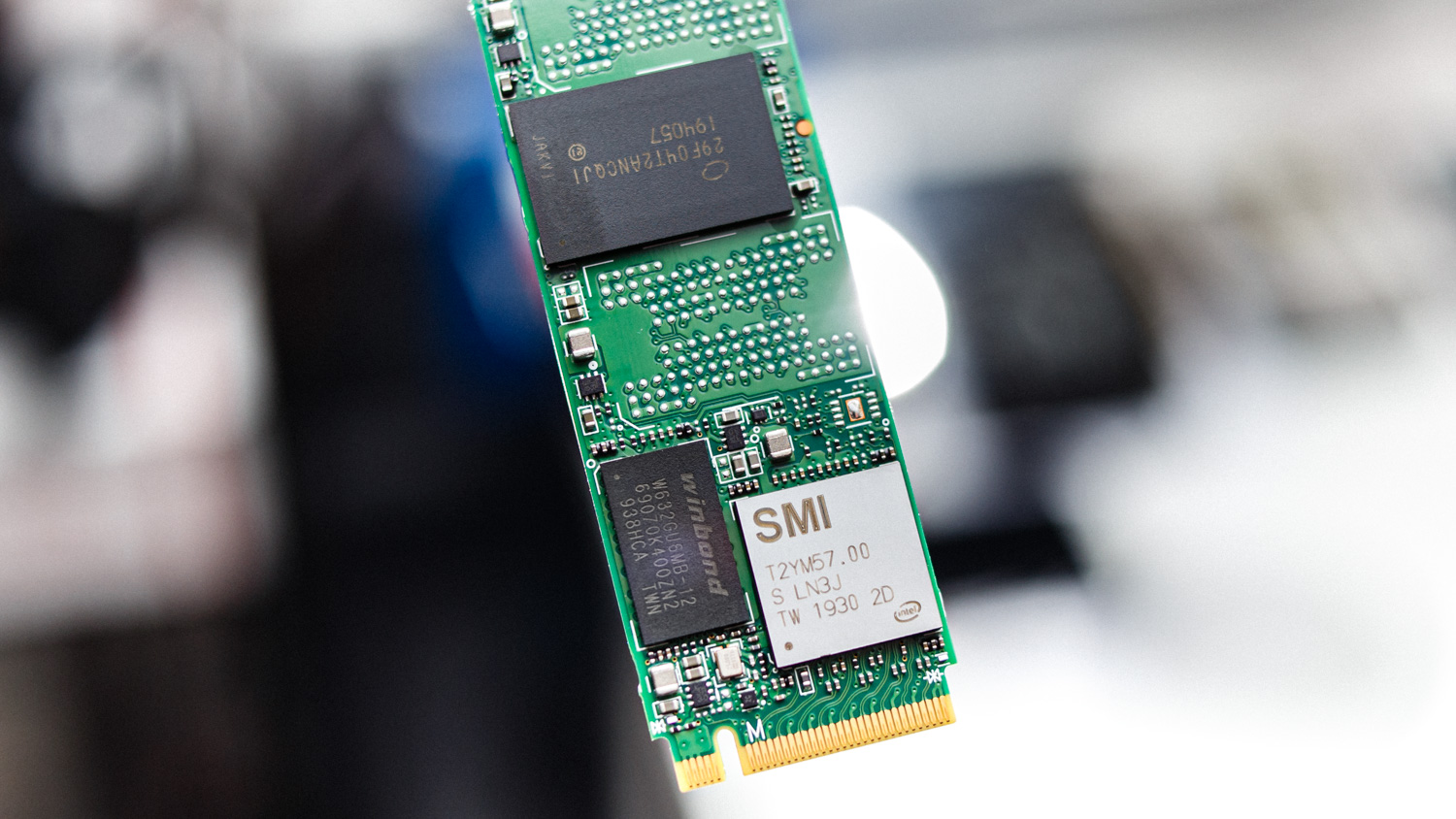Why you can trust Tom's Hardware
The Intel 665p is a tough sell at current pricing due to the intense competition it faces in the market. Corsair’s Force MP510 and Silicon Motion’s P34A80 both offer up to 3.5 GBps performance for the same price, or less. While the 665p features a 50% higher endurance rating than the previous-gen 660p, it still lags behind most of the competition. The MP510 offers almost six times the rated endurance. If you're looking to satisfy write-heavy workloads, be sure to check out our best SSDs article for alternatives.

Intel’s SSD 665p offers various improvements over its predecessor. The company markets the SSD 665p as a device that will deliver “PCIe performance and endurance for everyday computing.” Having tested it, we can confirm that it will keep up with most normal desktop usage patterns. It’s snappy in operation, and offers plenty of speed for most users. Plus, it is quite efficient.
While it didn’t top the leaderboards, the drive outperformed its predecessor by a margin of 5-10%. It also kept up with some of the fastest SSDs throughout our spate of real-world workloads. It also loaded games even faster than a new PCIe 4.0 NVMe SSD.
Performance-wise, the 665p's only fault is that it has slow direct-to-QLC write speeds that clocked in at only 185 MBps. However, that wouldn't be a factor for most users unless they do massive file copy operations on a regular basis. The refined intelligent dynamic write cache also recovers quite quickly.
WD’s Blue SN550 gives the 665p a run for its money, though, and hits where it hurts. This holiday season Intel has slashed prices for the 660p, making it one of the top bang-for-your-buck SSDs available. However, Intel’s 665p doesn’t follow that trend and comes into the market at a premium. It costs $25 more than the WD Blue SN550 that boasts more endurant TLC flash.
For the price, the value scale tips in WD’s favor if you're looking for a 1TB upgrade, at least at this time. The WD Blue SN550 has much higher direct-to-TLC write speeds when the SLC cache runs out, and twice the rated endurance, too. The Intel one-ups the WD with a 2TB maximum capacity, on the other hand, so if you're looking for a capacious 2TB model, the Intel 665p is a great value. However, those models aren't freely available at retail yet, but we'll update as soon as one hits our labs.
Get Tom's Hardware's best news and in-depth reviews, straight to your inbox.
MORE: Best SSDs
MORE: How We Test HDDs And SSDs
MORE: All SSD Content

Sean is a Contributing Editor at Tom’s Hardware US, covering storage hardware.
-
levijonesm Hi Sean, may I ask how the direct-to-QLC write speed of 185 MB/s was calculated? From the graph "Sequential Steady State Write Workload", I see 287 GB written after 15 minutes. This works out to 319 MB/s.Reply
Also, in your review of the 660p here, the sustained write speed of the 660p seems to be 175 MB/s (not 125 MB/s mentioned in this review). Just some points of clarification please. Thanks.
A direct-to-QLC speed of 185 MBps is perfectly acceptable to me, once the price drops a bit to 660p levels. The improvements in cache recovery and power efficiency are welcome too. Thanks for the very good review. -
seanwebster Replylevijonesm said:Hi Sean, may I ask how the direct-to-QLC write speed of 185 MB/s was calculated? From the graph "Sequential Steady State Write Workload", I see 287 GB written after 15 minutes. This works out to 319 MB/s.
Also, in your review of the 660p here, the sustained write speed of the 660p seems to be 175 MB/s (not 125 MB/s mentioned in this review). Just some points of clarification please. Thanks.
A direct-to-QLC speed of 185 MBps is perfectly acceptable to me, once the price drops a bit to 660p levels. The improvements in cache recovery and power efficiency are welcome too. Thanks for the very good review.
I write to the drive after a secure erase with iometer - 128KB sequential workload @QD32. I average the cache speed before performance drops and then after it drops I average the remaining writes. (the charts seem to be mixed up slightly - check the last iometer charts for the rest of the write saturation charts until it gets fixed - there you will see the write cliff and better understand the cache)
The 660p review you are referring to is the 2TB model. We don't have the write saturation chart on the 1TB 660p review because it was added into the performance testing in later reviews (along with some minor adjustments here and there). I included the missing data from the 660p review here, and it is included now in various other reviews I've done since. It has a slower base write speed than the 2TB model after its cache exhausts. The 1TB 660p has a base write speed that hovers around 110-130 for the most part.
We should be getting the 2TB 665p in the coming weeks so, it will be interesting to see how it has improved as well. -
thisisaname While 287 GB/900 seconds is 319MB/s he was talking about direct-to-QLC speed so you remove the first 142MB 120 seconds ( the filling of the cache) the sum becomes 143 GB / 780 seconds giving 185.9MB/sReply -
dimar Shouldn't you say 5 years or 300TBW /600TBW warranty, whichever comes first? Would Intel service the drive if it gets to the TBW point?Reply